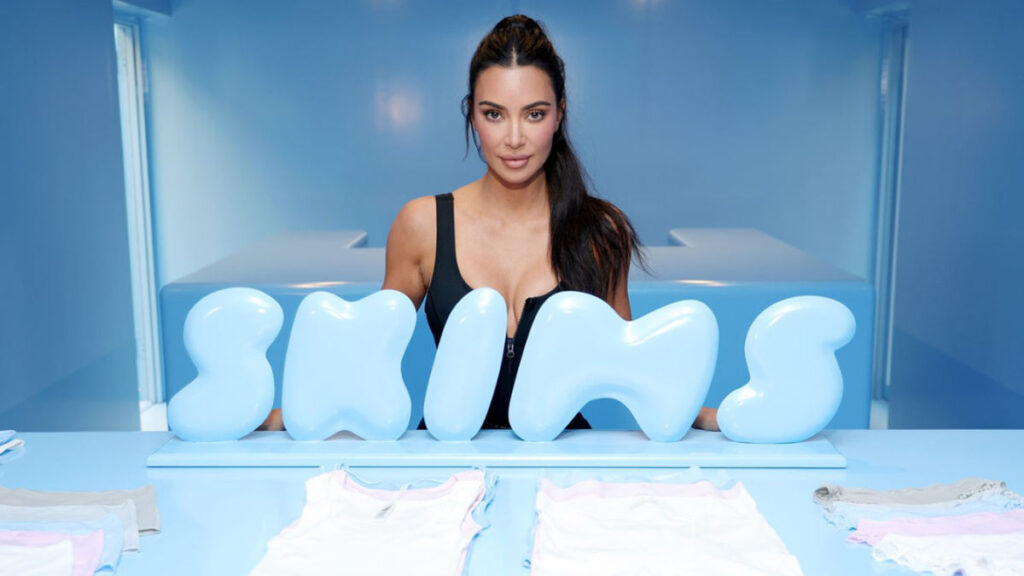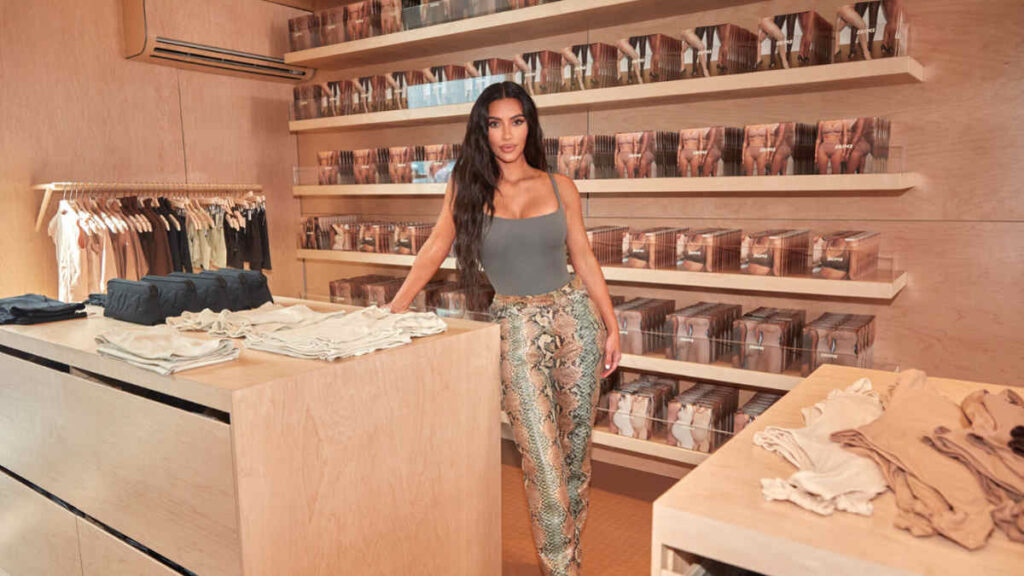In 2019, few would have guessed that Kim Kardashian’s latest project—a line of minimalist shapewear called SKIMS—would go on to challenge legacy brands and redefine an entire fashion category. Fast forward to 2025, and SKIMS is now valued at a staggering $4 billion, placing it among the most successful direct-to-consumer brands in the world. What began as a solution to a wardrobe gap has become one of the most compelling business stories in celebrity entrepreneurship. But this isn’t just about stretchy fabrics and savvy Instagram marketing. The rise of SKIMS has had a profound effect on Kim Kardashian’s net worth, catapulting her from cultural icon to serious business mogul. Here’s how it happened—and what it tells us about power, influence, and the future of fashion.
To understand Kim’s net worth journey from 2007 to 2025, it helps to see how SKIMS fits into her broader empire.
From Pop Culture Icon to Portfolio Powerhouse
Kim Kardashian didn’t just pivot—she rewrote the rules for what celebrity entrepreneurship could look like. In the early 2010s, her business deals often followed a familiar formula: lend the name, cash the check. From fragrance lines to mobile games, she built an empire by licensing her image. But beneath the surface, she was paying attention—watching how brands scaled, how consumers responded, how fast trends could fade. That quiet observation became the foundation for a more intentional second act.
By the time KKW Beauty launched in 2017, Kim was no longer just the face—she was in the room, making decisions on product formulation, brand strategy, and ownership structure. The shift was subtle at first, but powerful: she was moving from influencer to founder, from nameplate to equity. That learning curve—of having control, not just visibility—set the stage for SKIMS. In hindsight, you can see the pattern: a calculated move toward long-term value, not just viral relevance. Public perception began to change, too. The punchlines faded. In their place? Boardroom credibility.
SKIMS in 2025: The Business Mechanics Behind a $4B Valuation
SKIMS didn’t hit a $4 billion valuation just because it’s popular on Instagram. Its value lies in how ruthlessly well it executes across multiple layers of modern business—branding, distribution, and expansion—all while staying anchored in cultural relevance. At its core, SKIMS is a direct-to-consumer powerhouse with razor-sharp margins and a fanatically loyal customer base. But the brand’s success runs deeper than social buzz.
One key driver? Product expansion done right. What started as shapewear quickly grew into loungewear, sleepwear, and in 2023, a menswear line that launched with NFL stars and sold out within hours. That growth isn’t just about new SKUs—it’s about capturing wallet share across categories. The brand has also expanded internationally, building a global audience that includes retail partnerships with Selfridges, Nordstrom, and Net-a-Porter—all while maintaining DTC dominance through its site.

Financially, SKIMS checks the boxes investors love: repeat purchase behavior, high retention rates, and scalability. According to Bloomberg, the company was generating hundreds of millions in revenue annually even before the latest funding round. Investors like Greenoaks and Thrive Capital didn’t just see a celebrity founder—they saw a resilient, well-run company that could behave like a modern fashion-tech hybrid. In short, SKIMS isn’t valuable because of Kim Kardashian. It’s valuable because it would thrive even without her.
The Net Worth Multiplier: What SKIMS Means for Kim’s Wealth Today
Kim Kardashian reportedly owns about 35% of SKIMS, which, at its $4 billion valuation in 2025, translates to roughly $1.4 billion on paper. That single holding alone makes up the lion’s share of her estimated $1.7 billion net worth. For the full picture of Kim Kardashian’s overall net worth in 2025, including her real estate and other ventures, check our in-depth breakdown. But as with any private company, that number is far from liquid. Kim can’t just pull $1.4 billion out of the business overnight—her stake represents theoretical wealth unless she sells or takes the company public.
Still, the implications are huge. SKIMS gives her leverage, long-term upside, and the kind of financial clout most celebrities never touch. It also rebalances her portfolio. While SKKN by Kim, her skincare line, contributes millions in annual revenue, and her real estate holdings are valuable in their own right, neither compares to the wealth-generating potential of SKIMS. The brand has become her financial centerpiece.
What’s more, if she ever did decide to sell a portion—whether to private investors or via IPO—she could unlock vast amounts of capital without sacrificing control. In that sense, SKIMS isn’t just a brand or a business. It’s her net worth engine, and it’s running at full speed.
Beyond SKIMS, her multimillion-dollar real estate holdings further reinforce her position as a true mogul.
How Kim Kardashian Compares: Billionaire Club or Just Billion-Dollar Brand?
Kim Kardashian may now sit comfortably in the billionaire club, but what sets her apart isn’t just her net worth—estimated at $1.7 billion as of 2025—it’s how she got there. Unlike her peers, Kim didn’t partner with a beauty conglomerate or license her name for a fast payday. She built SKIMS with a long view: control, equity, and scalability.
Compare that to Rihanna, whose Fenty Beauty partnership with LVMH skyrocketed her to a reported $1.4 billion net worth. Rihanna’s empire is deeply entrenched in luxury and prestige, but she shares ownership with a corporate giant. Kylie Jenner, meanwhile, cashed out early—selling a 51% stake in Kylie Cosmetics to Coty for $600 million, a move that both padded her bank account and sparked questions about valuation accuracy. Her current net worth hovers around $700 million.
Then there’s Beyoncé, whose portfolio—Parkwood Entertainment, Ivy Park, real estate—is more diversified, with an estimated net worth of $600 million. She’s built a brand on artistry and autonomy.
But Kim? She’s quietly built one of the most valuable founder-led fashion brands of the decade. SKIMS gives her the kind of long-term upside and control most celebrities don’t have, making her wealth not only high but enduring.
See how Kim’s wealth compares to Rihanna’s, including differences in business models and ownership strategies.
“As a Former Skeptic, Here’s What Changed My Mind About SKIMS”
I’ll admit it: I rolled my eyes when SKIMS first launched. Another celebrity shapewear line? Great. I assumed it would follow the usual arc—flashy rollout, influencer buzz, then quietly fizzle. But a year or two in, something shifted. I started noticing SKIMS everywhere—not just on Instagram, but in airports, at fashion trade shows, even on men I knew. The designs weren’t just on trend—they set trends. And then I saw the numbers.
As someone who works in brand strategy, I’ve seen countless celebrity ventures flame out because they confused attention for longevity. SKIMS didn’t. It treated attention like the spark, not the fuel. Kim wasn’t just slapping her name on a product—she was building something structurally smart: vertically integrated, community-tested, and scale-ready. The moment I stopped being a skeptic? When I saw SKIMS doing drop-style launches with sellout velocity that rivaled sneaker brands.
Now, I think SKIMS is one of the most impressive case studies in celebrity-led commerce. It’s not a side hustle. It’s a masterclass.
Why SKIMS Matters More Than Just Money
SKIMS isn’t just a commercial juggernaut—it’s a cultural bellwether. From the start, the brand positioned itself around inclusivity, offering a wide spectrum of sizes and skin tones long before it became industry standard. That commitment resonated with consumers who were tired of being treated like afterthoughts in mainstream fashion. In many ways, SKIMS helped rewrite the script for what bodywear could look like: functional, flattering, and—crucially—accessible.

Critics once skeptical of Kim Kardashian’s influence began acknowledging the brand’s broader impact. Fashion editors praised SKIMS for normalizing shapewear as everyday wear, while social media communities highlighted how the line embraced bodies that were rarely catered to by traditional labels. It was a shift not just in product design, but in cultural expectations.
In extending her brand beyond the typical aspirational mold, Kim deepened her relevance. SKIMS didn’t just sell comfort—it sold visibility. And in doing so, it captured the loyalty of a far more diverse, intergenerational audience than many thought possible.
Explore all the ways Kim turns her brand into money, from TV royalties to tech investments.
What SKIMS’ Billion-Dollar Status Says About Kim’s Legacy
SKIMS’ $4 billion valuation isn’t just a business milestone—it’s a narrative turning point. It marks the moment Kim Kardashian shed the last remnants of “famous for being famous” and cemented her place among the most successful self-made entrepreneurs of her generation. More than a product line, SKIMS is proof that celebrity can be more than currency—it can be capital, if wielded with intention, strategy, and staying power.
Her journey reframes what it means to build legacy in the digital age. Not through inheritance or spectacle, but through calculated risk, ownership, and relentless reinvention. In the future, we may look back at SKIMS not just as a hit brand, but as a blueprint—of how celebrity influence, when fused with business acumen, can scale into something real, resilient, and era-defining.
Mohit is a finance and entertainment writer specializing in celebrity wealth, brand strategy, and media empires. As Co-Founder of TheNetWorths.com, he brings over a decade of experience analyzing public income streams, endorsement deals, and the evolving creator economy.




















3 thoughts on “SKIMS Valuation in 2025: How It Impacts Kim Kardashian’s Net Worth”